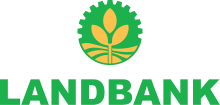Landbank of the Philippines
 |
|
| State-owned | |
| Industry | Finance and Insurance |
| Founded | 1963 in Manila, Philippines |
| Headquarters | Manila, Philippines |
|
Key people
|
|
| Products | Financial Services |
| Revenue | ₱31.37 billion (2009) |
|
₱13.6 billion ( |
|
| Total assets |
₱1.4 trillion ( |
|
Number of employees
|
7,954 |
| Website | www |
Land Bank of the Philippines (Filipino: Bangko sa Lupa ng Pilipinas, Spanish: Banco Hipotecario de Filipinas), stylized as LANDBANK or also known by its initials, LBP, is a universal bank in the Philippines owned by the Philippine government with a special focus on serving the needs of farmers and fishermen. While it provides the services of a universal bank, it is officially classified as a "specialized government bank" with a universal banking license.
LANDBANK is the fourth largest bank in the Philippines in terms of assets and is the largest government-owned bank. It is also one of the biggest government owned and controlled corporations in the Philippines.
Unlike most Philippine banks, LANDBANK has an extensive rural branch network with 365 Branches/Units and 1,607 ATMs. It services many rural sector clients in areas where banking is either limited to rural banks or is non-existent.
In 2015, it planned to merge with DBP but it did not push through.
On February 4, 2016, President Benigno Aquino III approved the Executive Order #198 on the merger between Land Bank and the DBP, with the former as the surviving entity.
LANDBANK was established on August 8, 1963 as part of the Agricultural Land Reform Code as part of a program of land reform in the Philippines. It was to help with the purchase of agricultural estates for division and resale to small landholders and the purchase of land by the agricultural lessee. In 1965, LANDBANK's by-laws were approved and its first board of trustees was formed, with the Secretary of Finance as Chairman.
On October 21, 1972, Presidential Decree No. 27, signed by President Ferdinand Marcos, emancipated all tenant farmers working on private agricultural lands devoted to rice and corn, whether working on a landed estate or not. The system was implemented through a system of sharecropping or lease-tenancy. LANDBANK was tasked to collect 15-year land amortizations from beneficiaries at the cost of the value of the land plus six percent interest per annum.
...
Wikipedia
